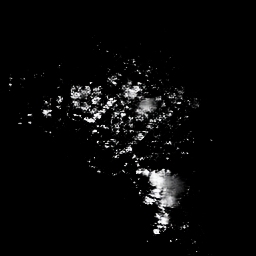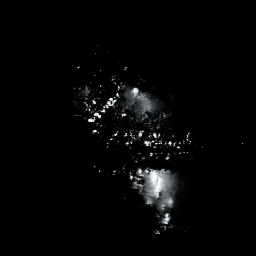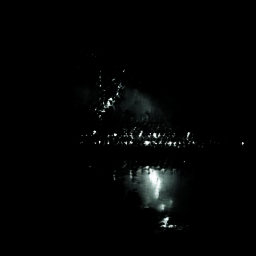Recipes
Recipes for seeing
Connecting with one another at the level of procedure, using simple materials to generate replicable experiences.
See this page for a list of common ingredients.
Before you get started, see this guide to preparing recipes, or revisit it along the way.
Recipe 1: Edgeworks
Edges are the pencil lines we use to create perceptual sketches. We find them in regions of contrast, and sometimes, where there is none: notice how your mind can also draw an edge to complete an illusory contour. Edges can be hard or soft, stimulatory or semantic, spatial or temporal, or any combination of these. They mean many things at once. Like the first mark on a white page, an edge holds infinite potential.
Recipe 2: Salt and Pepper – Cooking with Bright and Dark
This week’s recipes draw from the simplest ingredients: relative bright and dark. ‘Relative’ because bright only has meaning relative to not-bright. And because bright and dark are relative, one value of brightness can be great or small in different contexts. In fact, bright can be dark, and dark, bright—it all depends on context. For example, in a dimly lit room, the surface of a book catching a little moonlight can be bright relative to the dark surround, or that same square of brightness can be dark if the surround is “turned up”.
From these two interdependent ingredients, bright and dark, we can make anything in perception, from simple textures and edges, to shapes, solids and scenes composed of complex three-dimensional forms and depth. It all depends on the units you choose, how you arrange them, blend them, etc.
The overall objective of this week’s recipes is to experience—and share experiences—of bright and dark as units of relative value that can be mixed, ordered, extended, shaped to create a wide range of perceptions, from a single point of difference, to an intricate 3D landscape. For example, look at this photo:
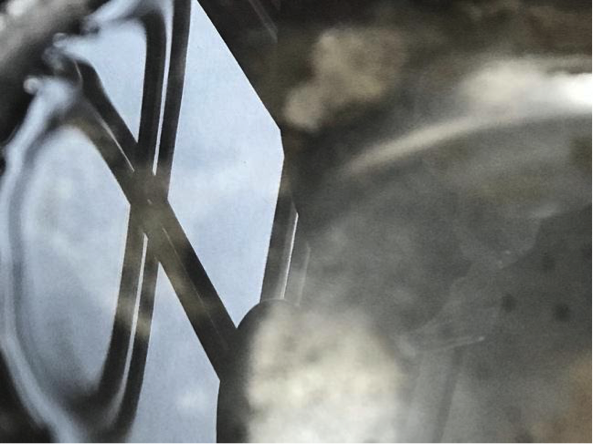
It is a mix of bright and dark: some hard edges, gradients, blobs and rectilinear shapes. Is it a random collection of bright and dark, or is it organized such that you perceive textures, surfaces, shapes, even objects and depth? One can perceive it as both. Even sections of the image can look like “nothing”, just mottled bright and dark, or, an ordered bright/dark pattern that activates perception of, e.g., a convex surface. Now, look at this video:
The blotches, lines, pools of bright and dark move and grow in relationships that create peaks and valleys in perception, a changing 3D landscape, or one can see just flat pattern changes.
Now grab the shakers:
Texture Sauce
In a video clip, sprinkle, smear, shake, etc. bright and dark to create a surface of changing texture
Gradient Rise and Fall
In a video clip, shift a gradient in ramp, range or orientation to generate perception of changing depth
Shape Bake
Put together bright and dark shapes that read as flat pattern or complex three-dimensional structure.
Prepare for Thursday, 9.17
:: See student work
Recipe 3: Essen, Essen! See Size, Shape and Speed*
Size, shape and speed are major ingredients in the perception of depth and motion. Hikers on the mountain ridge look like ants; the circle of your coffee cup becomes a squat ellipse when lifted to your lips; a boat on the horizon moves super slowly. These are pronounced examples. If you look carefully at the world right around you, you’ll notice countless, subtle transformations of size, shape and speed, in action or memory; the trapezoidal face of the book is foreshortened relative to the rectangle in prior experience. Even stereopsis, the fusing of input from the two eyes into a single depth image, depends on difference.
Size, shape and speed transformations, micro and macro, define the spatial and temporal structure of our visual world. We so readily read these transformations as depth and motion that we don’t see them (usually).
Essen, Essen!
FInd or create a featureless visual environment. Add size, shape and speed and manipulate. Serve up three environments of sculpted spatial and temporal structures.
Prepare for Thursday, 9.24
*Famous hangout S & S delicatessen at Inman Square, Cambridge is so named because the original German owners implored guests to “Essen, essen!” (eat, eat!), leading people to call the deli “S and S”.
Recipe 4: Fromage to the Square
The color recipes pay homage to Josef Albers’ work—his art, thought and teaching driven by his sensitive eye. He taught at the Bauhaus, Yale and Black Mountain College. His early artistic explorations of mechanical processes and new materials allowed him to cultivate detachment from the work and to shape an approach to nonrepresentational art that characterize his Homage to the Square series. This visually-nuanced study of the relativity of colors in perception occupied him for 25 years and led to insights such as “Abstraction is real, probably more real than nature.” He meant artistic abstraction is likely a deeper insight about physical reality than the commonly held, scientific models we take for ground truth. For Albers, color was a “fringe phenomenon” straddling the mind and the material world, ideal for artistic research and communication.
The recipes are two, one in the Albers method and the other, free form. The camera eye, quite different than the human, will adjust and contribute in ways that wander from your experience. Try to avoid effects. Err on the side of accurate differences in perception, even if that of the camera
1. Open Face
Cut square apertures in two, (roughly) complementary color-aid papers. Venture out into the world. Explore colors through the apertures and see what perceptual variations you find. You might compare the two side by side, either in a single photo, or later when you arrange and crop photos on your computer. Or you might compare two shots of one paper under slightly different lighting conditions.
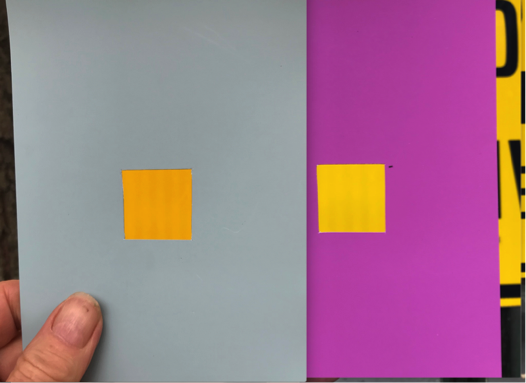
2. Spreadable
Equipped with your knowledge of material and illuminant colors, their interactions and mutual influences, scale up and scout out. Create an indoor installation, or use outdoor settings and surfaces. Focus on creating a work that foremost and forcefully delivers an experience of color worked as a medium by controlling light, surfaces, distances and proximity relationships. As a basic example, below, see a square foreground of white paper that obscures the color-changer bulb illuminating the wall behind. This allows illumination of the wall and the foreground square with two different light sources , and study of the color-field interactions in perception. For your recipe, experiment with perceptual geometries other than the square to explore mutual illumination.
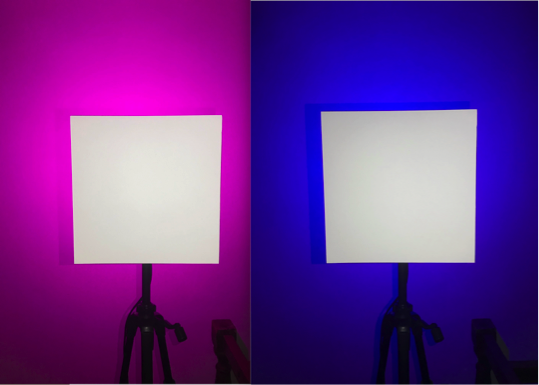
Recipe 6: Representation Fermentation
Cézanne’s approach to painting changed the concept of art. In the nineteenth century, art was often judged according to faithful representation that techniques such as single-view perspective and chiaroscuro were intended to achieve. Cézanne embarked on intensive perceptual studies of visual subject matter leading him to give up pictorial artifice in order to capture "lived perspective”*. One of the most salient, consequential examples in his work is the proto-cubist object that embodies movement and multiple views. Such an object, e.g., a house with multiple outlines showing varied angles at once, may not accord with the concept of the rigid, three-dimensional structure, but is accurate to seeing experiences from which the concept is built. Merleau-Ponty said that Cézanne’s wanted to get to the point where “sight" was “touch”.** In Cézanne’s own words, he wanted to "see like someone who has just been born”.**
Recipe 7: Featured Dessert
Final, sweet elementals: we’ve explored ingredients, flavor pairings, and the chemical transformations that come of placing proximal stimuli on the fire of the eye. Now we are ready to foreground and test our culinary abilities by working with sparsest ingredients: under-constrained inputs that induce maximal associative recalls (i.e., what complex flavor experiences can you create with minimal ingredients?).
The recipe is to focus on under-constrained inputs for maximal associative recall experiences. For example, Pawan’s lecture featured wireframe figures ambiguous with regard to 3D percepts generated. Colors and luminance distributions can also trigger strong associative-recall experiences without specificity.
Use sweet elementals (ambiguous 2D figures, color patterns, luminance distributions—can be used singly or in combination) to make two “associative desserts”
